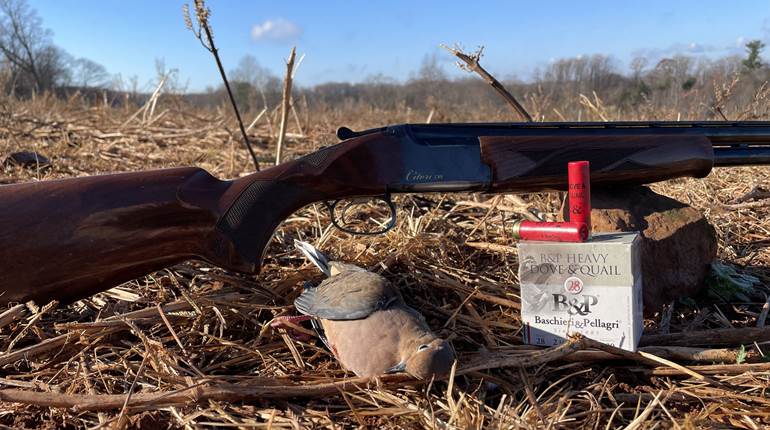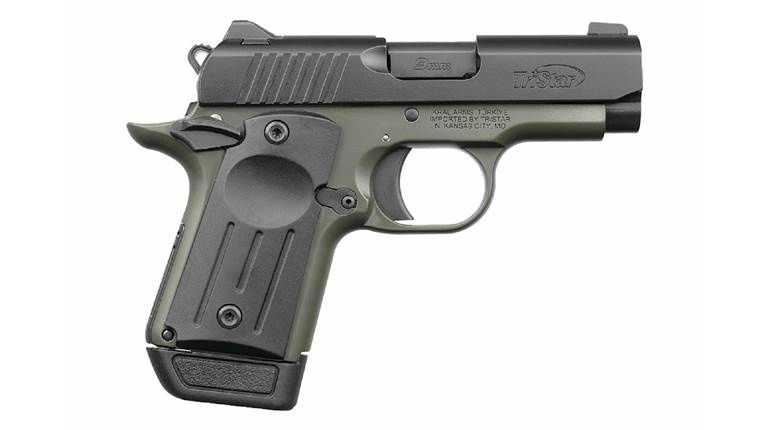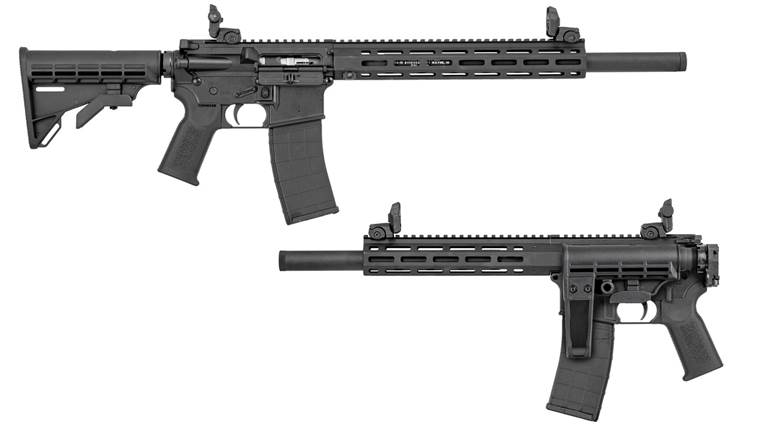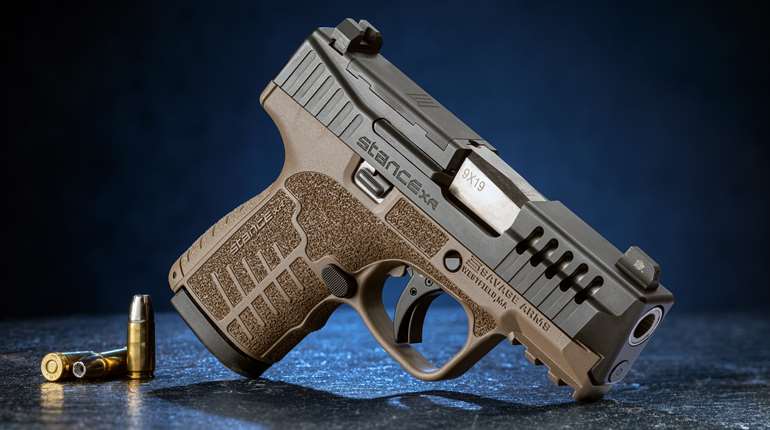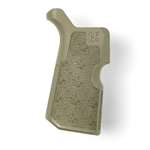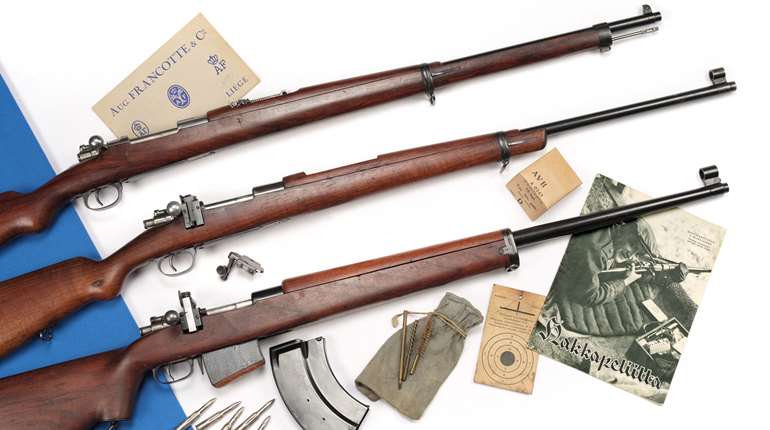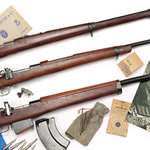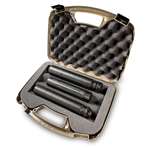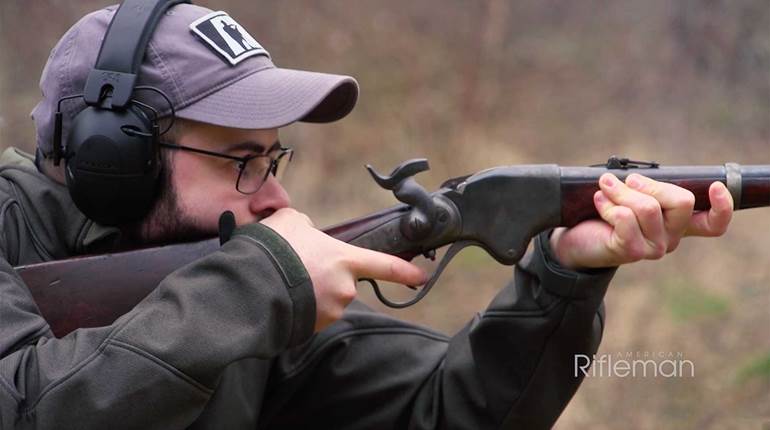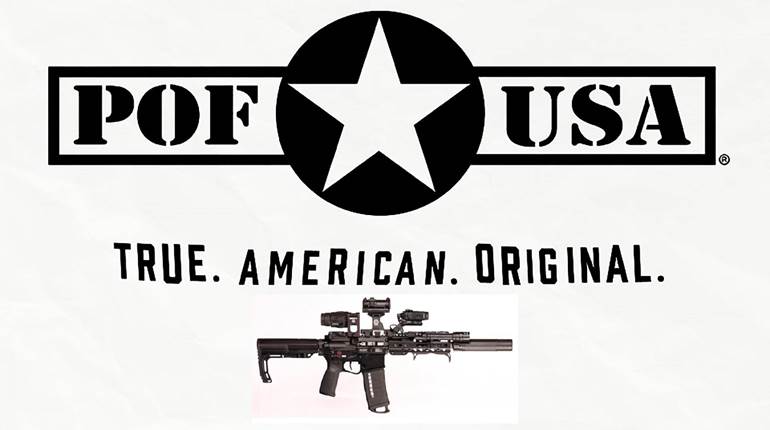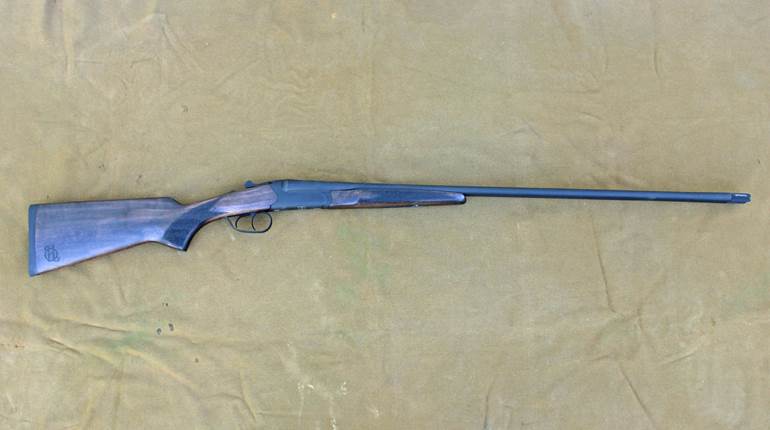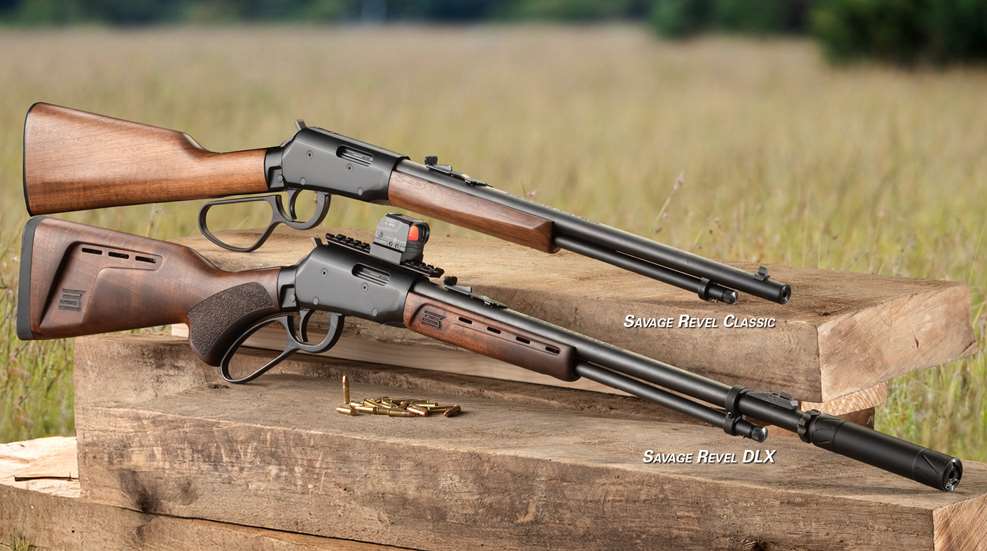
Given today’s fascination with, and focus on, “precision” rifles, and the general refrain from the study of, if not disdain for, history, it might be lost on some that one of the country’s premier riflemakers—Savage Arms, Inc.—is returning to its roots. That’s right; the company that creates myriad hunting and competition models incorporating the renowned 10/110 and 12/112 actions, among others, including the aptly named Model 110 Precision and 112 Long Range Precision, is revisiting lever-actions—the very type of rifle on which the firm was founded. Announced at the 2024 SHOT Show, the Savage Revel Classic and DLX rimfire models harken to a bygone era.
A Retrospective Look
Established in Utica, N.Y., in 1894, the company’s first product was the Model 1895, a centerfire, lever-action rifle available only in .303 Savage. According to the Blue Book Of Gun Values, 35th Ed., approximately 6,000 of the guns were made before production ceased in 1899. It would be replaced by another lever-action, the Model 1899 introduced that year. Chambered in a multitude of cartridges, it has been available on an inconsistent basis for around a century. Talk about longevity! That’s only one historical connection, though.
Similar to Savage’s storied history with lever-actions, so, too, is its link to rimfires. In fact, the company’s earliest such product came just four years later in the form of the Model 1903 slide-action rifle chambered for .22 Short, Long and Long Rifle ammunition. Then the single-shot Model 1904 debuted, and a takedown variant—the Model 1905—appeared the subsequent year. Both were rimfires, too. In 1909, an improved version of the Model 1903 was released.
Since its earliest days, Savage has continually offered consumers a considerable selection of rimfire rifles, as well as a few handguns, all at affordable prices. Today, its variety of rimfire rifles is likely unsurpassed. From the top-selling, semi-automatic Model 64 series, which debuted in 1996, to the newer A22—also a self-loader—and bolt-action B Series, Mark II and Rascal rifles, there’s something for all demographics. At the time of this writing, the selection constituted 63 products. Still, something was absent. That’s right—lever-action rimfires.
“With the rise in popularity of lever-action rifles, it was an appropriate time for Savage to tap into our roots and step into the lever-action market ourselves,” said Beth Shimanski, director of marketing for the company. “Being a leader in rimfire rifles, we wanted to round out our existing lineup to include all common action types.”
Strangely, the firm hadn’t previously melded its rimfire know-how and capabilities with its lever-gun origins. That was rectified with the debut of the Revel rimfires. This time, despite a history of models named for the year of their release, the gun’s name is derived from the word “lever” being spelled in reverse. Of course, according to the dictionary, it can also be understood as: “to indulge in boisterous activities” or “take great pleasure or delight.” Sounds like an apt description of a range session when a brick of .22 LR ammunition is on-hand. Now there are 65 options in the Savage rimfire line.
The Canadian-made Revel DLX and Classic rifles are not remakes of an existing lever-action rimfire, though; Savage approached the project with a different mindset—improve the age-old design with a new concept. Goal achieved. Let’s look at each model individually, beginning with the DLX.
Reveling In The DLX Design
When creating the Revel series of rimfires, it’s obvious that the engineers sought to modernize them. Aesthetically, the DLX is the edgier model; however, the foundation of the two is the same. As a lever-action rifle, it’s operationally identical to all others of the ilk—past and present. Pushing downward and forward on the lever loop retracts the bolt, which, in this case, occurs in the upper receiver assembly. As it does so, the hammer is cocked. Simultaneously, if a cartridge or case is extracted from the chamber, it will be ejected through the ejection port. After reaching its forwardmost position, the lever loop is then swept rearward, forcing the bolt assembly forward to pick up the awaiting cartridge and lock into battery.
It’s worth noting that, when the lever reaches its at-rest position, which is not directly against the buttstock, there is an audible “click.” It’s by no means quiet, and some riflemen might take exception to it. The loop is sufficiently sized to accommodate even large, gloved hands, and tasteful Savage logos are found on both sides of the stock and fore-end. Operation is exceptionally smooth.
Revel rifles have a three-position hammer. Once fully cocked (as previously described), the rifle is ready to fire. There is a half-cock position, based on a notch in the hammer, but the company warns that it should not be treated as an outright safety. Deep grooves machined into the hammer spur aid purchase. A two-position crossbolt safety resides in relieved sections on each side of the wrist, and both tactile and audible confirmation of its movement are present; a small band of red is visible on the gun’s left side when ready to fire. While on the topic of fire controls, the DLX’s single-stage trigger incorporates a smooth-faced steel shoe and, on the sample, it broke at only 2 lbs., 13. ozs. The pull was effortless, but there was noticeable creep. All in all, though, it was a good trigger—especially for a lever-action.
The Revel series models are takedown rifles. “The Revel was engineered around the takedown feature to ensure it would not have any impact on the reliability and feeding of the rifles,” Shimanski said. “When the rifle is taken down, all the main components involved in the cycling of the action are kept together as an assembly to ensure that it is not affected when taken apart.” That’s forward-thinking and intelligent.
Due to its takedown feature, the Revel’s receiver section consists of three parts. The Cerakote-finished aluminum cover is secured (via four machine screws) to the upper receiver assembly, and two takedown pins secure the lower receiver assembly to the cover, which essentially holds everything in their proper relationships. The top of the rounded cover is drilled and tapped to accept bases—however, it’s a new Savage pattern.

Taking apart a Revel rifle is fast and uncomplicated. Here is the process: After confirming that the firearm is unloaded, the safety is activated and remains in that condition throughout the disassembly/reassembly process. Next, the captive (and non-removable) takedown pins on the bottom of the receiver cover are pressed until they will go no farther. If the design seems familiar, that’s because all but the AR-platform neophyte would instantly recognize it. According to Shimanski, “[It] was inspired by the AR-15 takedown system using two pushpins to allow for very simple takedown that users would be familiar with. This system keeps the takedown feature very low-profile without any type of screw that might stick out from the receiver that is common on some classic designs, such as the Savage 1903 .22 LR rifle.” The lower and upper halves of the rifle are then pulled in opposite directions. Reassembling them requires a bit of finesse and attention to detail, but quickens with practice. No manhandling is warranted. When disassembled, the two pieces measure 19 3⁄8" and 23 7⁄8", respectively, making transport easy.
The Revel DLX has a medium-profile, carbon-steel 18" barrel that’s threaded 1/2x28 TPI to accept a sound suppressor or other accessory. A checkered steel cap is provided to protect the threads when not in use. Topping the barrel is an unsophisticated but effective notch rear sight with elevator, along with a hooded, fixed-post front unit screwed in place just behind its threaded muzzle.
Behind the front sight is a bracket that secures the barrel to the tubular magazine. Twisting the magazine end cap clockwise a smidge permits the inner tubular magazine (with follower) to be withdrawn for loading or unloading. Capacity depends on the chambering. While the DLX chambered in .22 LR holds 12 rounds in its magazine, those in .17 HMR and .22 WMR hold nine cartridges.

For a lever gun, the DLX’s furniture is a tad atypical. The satin-finished Turkish walnut used for the fore-end has a series of what could be considered cooling vents/channels (four per side inside a slight finger groove and another at the top along the barrel) that enhance its aesthetics. The fore-end itself is rather narrow, measuring 1.257" at its widest—just forward of the receiver. It’s absent a sling swivel stud, just like the buttstock.
The pistol grip-style buttstock is a spitting image of the fore-end. A large section of each side has been routed, and inside are larger through-and-through cutouts matching those on the fore-end. Like the fore-end, the buttstock also has Savage’s logo prominently displayed on each side and on the grip cap. Stippling on the pistol grip aids purchase, while a 0.955"-thick pliable recoil pad caps the buttstock. Certainly not needed for recoil, it’s a nice addition, nonetheless. The sticky pad features a hard insert at the top to prevent snagging when shouldering the rifle.
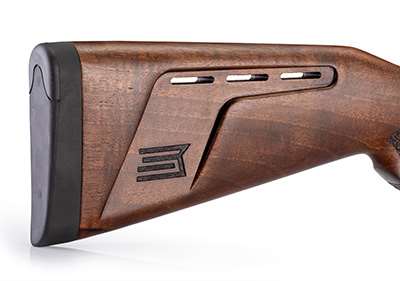
The Classic Difference
Shooters are individualistic, with differing tastes. Savage understood this truism. While the Revel DLX is sure to appeal for those favoring avant-garde aesthetics, those clamoring for something more conventional will find it in its brother, the Classic. Operationally, both models are identical, however, there are some important differences—particularly with regard to the stock. Like its counterpart, the Classic’s stock is fashioned from Turkish walnut and has a satin finish, but the fore-end is devoid of radical adornments, with no cutouts, channels or logos. It does swell to a quasi-ridge about mid-height, and the front is cut at an angle. Simple, functional and elegant in its own way.
The same formula applies to the buttstock, yet it’s shaped in a manner that there’s a clear flare about 1/3 of the way from its bottom. What’s more, instead of a pistol grip, the stock features a straight grip, which is favored by those who prefer a thin wrist. The Classic model’s lever loop is more triangular in shape than the oval used on the DLX—its also oversized, which, while unnecessary for leverage, isn’t hurting anything, either. A plastic plate with the Savage logo caps the buttstock.
As to the barrel, there are two primary differences. First, the front sight consists of a simple, non-hooded, dovetailed post front sight, while the rear is unchanged from the DLX. Additionally, it’s not threaded to accept a suppressor—not a deal-breaker for many hunters and backyard plinkers.
Revel At The Range
The Revel DLX was selected for testing. Before the range session commenced, the rifle was thoroughly cleaned. It was then topped with an EGW one-piece base, atop which a trusted Bushnell Elite 4200 4-16X 40 mm scope was secured using SSK Firearms’ TSOB rings. A Yankee Hill Machine Co. Mite suppressor was threaded on for the duration of the test. Testing took place on the last day of February—albeit one that was warmer than average in Virginia, with rapidly increasing wind gusts. Range work began with accuracy testing; five consecutive, 10-shot groups were fired with each load from 50 yards using a Caldwell sandbag-style rest with rear support.
The ammunition wasn’t selected haphazardly; rather, it featured three different projectile weights and configurations, propelled to varying velocities. Those selected for the test included: CCI Green Tag 40-grain lead round nose (LRN) and Suppressor lead hollow point (LHP), as well as Remington’s Viper 36-grain plated, truncated cone solid (PTCS). As CCI’s top-tier competition load, Green Tag was chosen to determine the accuracy potential of the DLX. And, as I would discover, that was a sound decision.
Remington’s 22 Viper ammunition led off, and things didn’t appear to be too promising; in fact, the random dispersion caused me to halt testing altogether and ensure that all firearm and optic-mounting screws were snug and nothing was amiss. Everything checked out. The gun/ammunition combination simply didn’t work in harmony, and the results can be viewed in the accompanying table. Fingers were crossed when I loaded the first 10 rounds of CCI Green Tag into the DLX’s tubular magazine.
Fortunately, the abovementioned episode wasn’t repeated. Rather, the first group turned out to be the best of the day, measuring 0.45". As a competition-quality load, that wasn’t wholly unexpected, but, then again, firing tiny, 10-shot groups from the bench with a lever-action from a sandbag-style rest is uniquely challenging, as operating the lever between shots is accomplished by raising the muzzle end of the rifle or angling the entire gun. Such movements can negatively impact consistent cheek weld and thus group size. That being said, Green Tag averaged 0.72" for the 50 total shots—which is excellent. Know that some five-shot clusters were well under half that measurement.
The final ammunition tested was CCI’s Suppressor, which featured a 45-grain subsonic lead-hollow-point bullet. Like its more costly CCI counterpart, Suppressor shot quite well. The smallest 10-shot group measured 0.70", and the average for the five clusters was 0.94". Again, reasonably good, given the operation of the lever gun.
One persistent observation was made when shooting for accuracy; group size tended to increase vertically. That’s foreseeable given that, as a takedown model, there was vertical movement in the area where the upper and lower receivers meet. This cannot be avoided. But, as a hunting arm or for perforating paper, this isn’t too much of a concern.
During testing, there were two failures to eject—both with the Remington load. In each instance, the bolt came fully back without the case being discharged through the ejection port. It was easily cleared, and no issues were encountered when the CCI ammunition was used. That malfunction was likely due to not cycling the bolt with enough vigor, rather than the gun or ammunition. The rifle experienced no other hiccups during the remainder of testing, even when several other ammunition brands and configurations were introduced to specifically evaluate functioning. The rifle fed, fired and extracted flawlessly. This should come as no surprise because, as reported by Shimanski, “With the large variety of .22 LR ammunition on the market, we [Savage Arms] were sure to test from the earliest stages with as many ammunition types as possible, including bare lead, wax-coated and plated bullets of multiple shapes, including hollow points to assure reliability with any ammunition that is loaded.”
It’s difficult to aptly describe, but the new Savage Revels have real substance. On the range, the DLX felt like a centerfire lever-action, not the “cheap,” inferior feel oftentimes found with lever guns chambered for rimfire cartridges. It balanced nicely when firing offhand, too. During function-testing, operation of the lever loop was brisk and graceful, and it fluidly fed the assorted ammunition to be discharged downrange. In an age of self-loaders and bolt-actions, one sometimes forgets the fun associated with churning large volumes of rimfires through a lever gun.
It typically takes time for someone (or a company) to return to its roots, but they usually do. Why? That’s the essence of life. With the Revel DLX and Classic, Savage Arms is revisiting its lever-action origins while harnessing its rimfire expertise and re-invigorating the timeless design. The Revel DLX rekindled that enthusiasm for me. And that’s exactly what it should do—turn back the clock.












